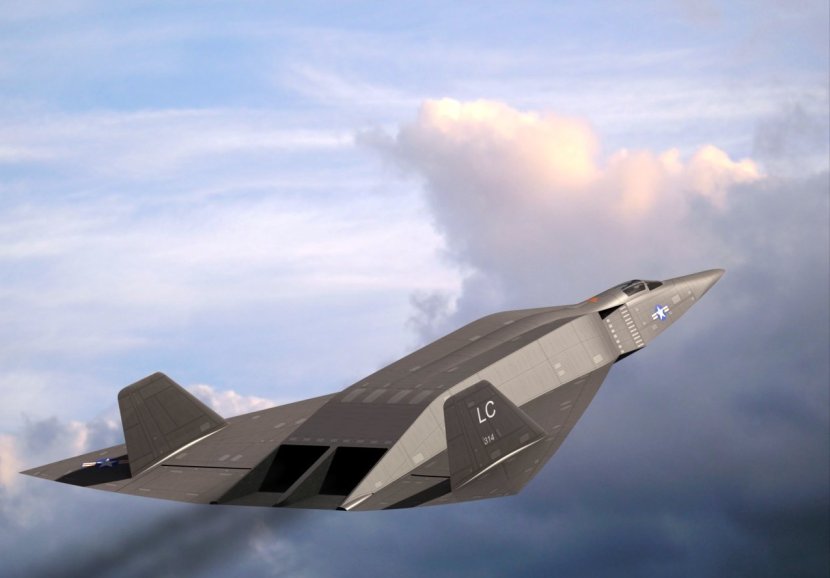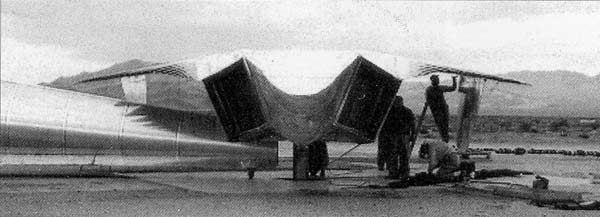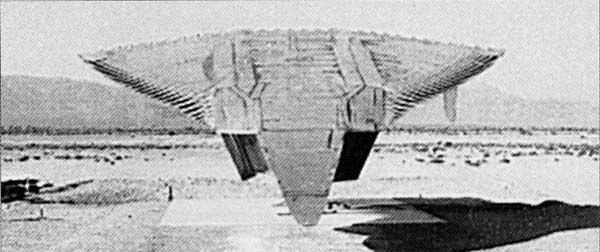Convair Kingfish: Stealthy Mach 4 at 75,000 feet

Image: Snafu-solomon.com
An air of mystery surrounds the Convair Kingfish, a proposed replacement for the U-2. The U-2 had been getting tracked by Soviet air defences as soon as it became operational in 1956, and its shelf-life was reduced from two years to six months. The CIA, its main customer, tasked Convair and Lockheed to come up with a spy plane that flew higher, faster and, crucially, with the lowest possible radar cross section (RCS).

Convair already had the putative B-58 which carried a large external pod for a nuclear weapon. In 1957, the B-58B Super Hustler was proposed, carrying an additional ‘parasite’ aircraft instead of the pod. This would be hauled to at least 35,000 ft where its three ramjet engines could be started, jettisoning its rear portion as it launched from the mother plane.

Small, very fast, and high-flying, it was a logical candidate for a reconnaissance platform. For the CIA project, the concept was reduced to a single aircraft, code-named FISH or First Invisible Super Hustler (best Blaxploitation movie never made?). It could reach a speed of Mach 4 at 75,000 ft, climbing to 90,000 ft as it burned off fuel. In order to handle the heat generated, the leading edges of the nose and wings were built of a new ‘pyroceram’ ceramic material.

This proposal was rejected, as the concept relied on unproven ramjet engines and required launching from a mother plane that did not yet exist. The Kingfish was Convair’s next attempt, keeping the stainless-steel honeycomb skin and the use of pyro-ceram material, with engine inlets made of fibreglass. It was sleek, with the classic Convair delta wing design and a pair of J58 engines mounted within the fuselage. Even the intakes and exhausts were arranged to reduce RCS.

But, in August 1959, Convair got the thumbs-down again, and Lockheed’s A-12 went into production. The Kingfish incorporated too many untried technologies, and concerns remained that Convair had sacrificed performance for RCS. Plus, Convair had a history of cost overruns, while Lockheed had shown it could be on time, under budget and, thanks to its secure Skunk Works facility, top secret. The Kingfish never saw light of day but, with a shape you can trace to the F-117 twenty years later, in many ways it was the birth of stealth.
— Oliver Harris, author of A Shadow Intelligence

Follow my vapour trail on Twitter: @Hush_kit
You may also enjoy Ten incredible cancelled Soviet fighter aircraft, Ten worst Soviet aircraft, Ten incredible cancelled military aircraft, Fighter aircraft news round-up, 11 Cancelled French aircraft or the 10 worst British military aircraft, Su-35 versusTyphoon, 10 Best fighters of World War II , Su-35 versus Typhoon, top WVR and BVR fighters of today, an interview with a Super Hornet pilot and a Pacifist’s Guide to Warplanes. Flying and fighting in the Tornado. Was the Spitfire overrated? Want something more bizarre? Try Sigmund Freud’s Guide to Spyplanes. The Top Ten fictional aircraft is a fascinating read, as is The Strange Story and The Planet Satellite. The Fashion Versus Aircraft Camo is also a real cracker. Those interested in the Cold Way should read A pilot’s guide to flying and fighting in the Lightning. Those feeling less belligerent may enjoy A pilot’s farewell to the Airbus A340. Looking for something more humorous? Have a look at this F-35 satire and ‘Werner Herzog’s Guide to pusher bi-planes or the Ten most boring aircraft. In the mood for something more offensive? Try the NSFW 10 best looking American airplanes, or the same but for Canadians. 10 great aircraft stymied by the US


Ah, the good old days when Lockheed were on time and on budget F-35
The Kingfish looks like the sort of plane that would beat you up and take your lunch money.
What amazes me is how beautiful and amazing the aircraft our engineers designed without the aid of CAD and computer modeling. They were truly artists and scientists.